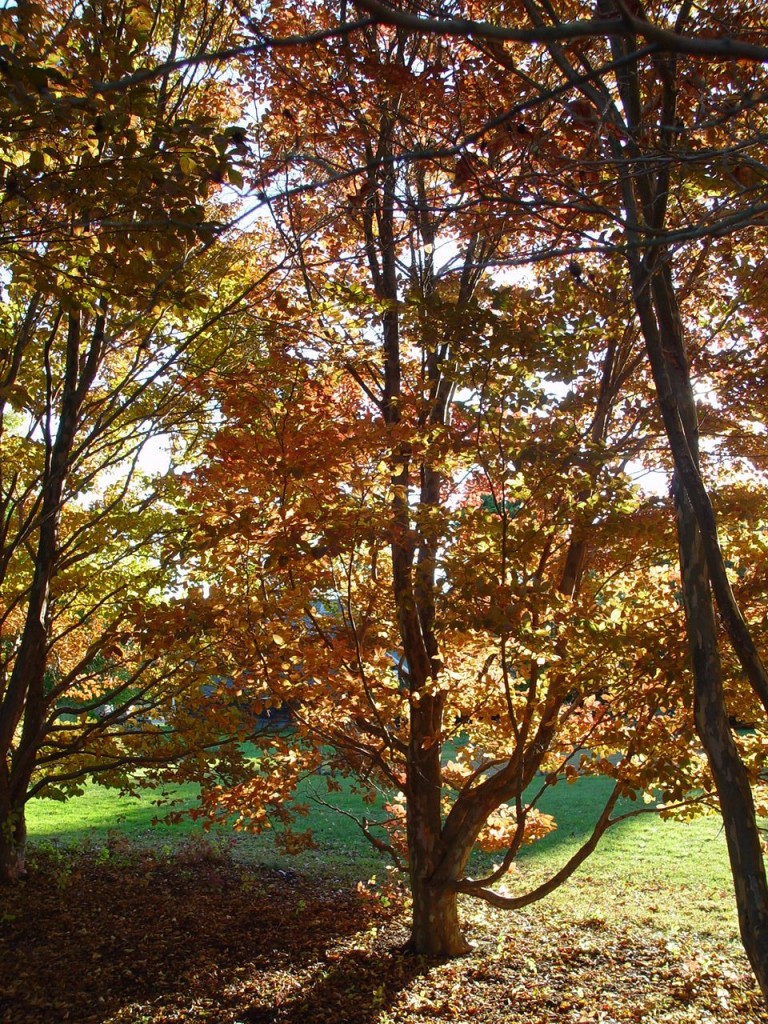Stewartia Collection

Stewartias are truly an all season plant. Whether it is the delicate white flowers in the early summer, to the rich fall color, or the visually interesting bark in the winter, there is always something to see. These ornamental trees have native ranges in both Asia and North America, where deciduous and evergreen species can be found, though many of them can be seen in cultivation here at the Polly Hill Arboretum. Described in 1753 by the Swedish botanist Carolus Linnaeus, the genus was named for John Stuart, 3rd Earl of Bute, an avid botanist.
Stewartias have long been of interest at the Arboretum, where Polly was initially fascinated by the striking bark and elegant flowers of these trees. As a result of this fascination, she sought out as many species as possible and grew them on from seed. Stemming from this focus, the Arboretum is home to over seventy stewartia trees, representing 21 taxa and nine distinct cultivars (cultivated varieties) introduced by Polly. As a result of Polly’s efforts and the Arboretum’s advancements in plant recordkeeping and mapping, this collection has been named a Nationally Accredited Plant Collection™ by the Plant Collections Network. Because of this designation, it is our duty and desire to make this collection a resource for anyone interested in this group of small flowering trees. In the following pages you will find a plethora of information and photos on stewartias and some of its relatives.
|
|
|
|
|
Stewartia Profiles
Stewartia malacodendron (Silky Stewartia)
Stewartia monadelpha (Tall Stewartia)
Stewartia ovata (Mountain Stewartia)
Stewartia pseudocamellia (Japanese Stewartia)
Stewartia rostrata (Beaked Stewartia)
Stewartia serrata (Saw-toothed Stewartia)
Stewartia sinensis (Chinese Stewartia)